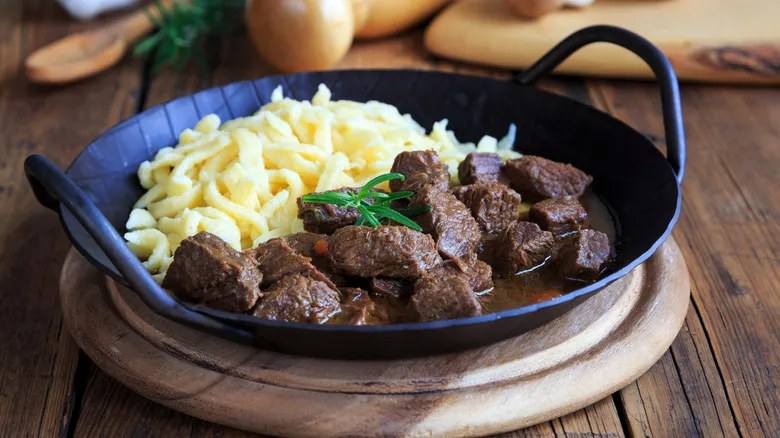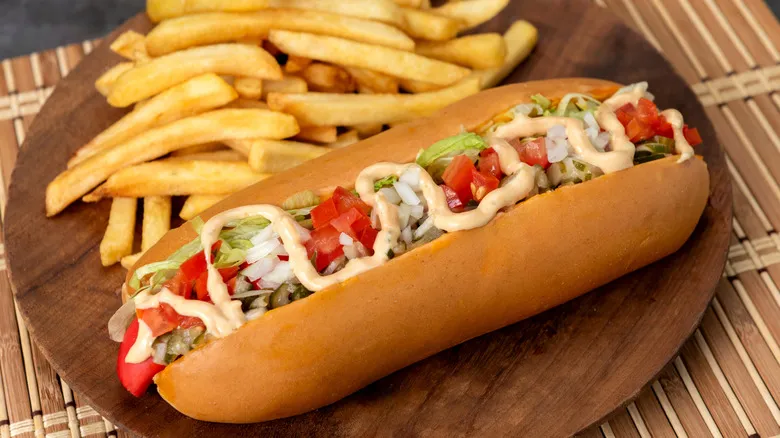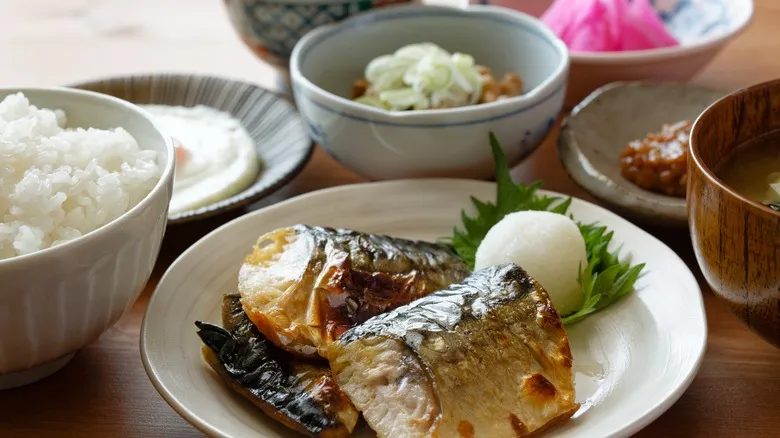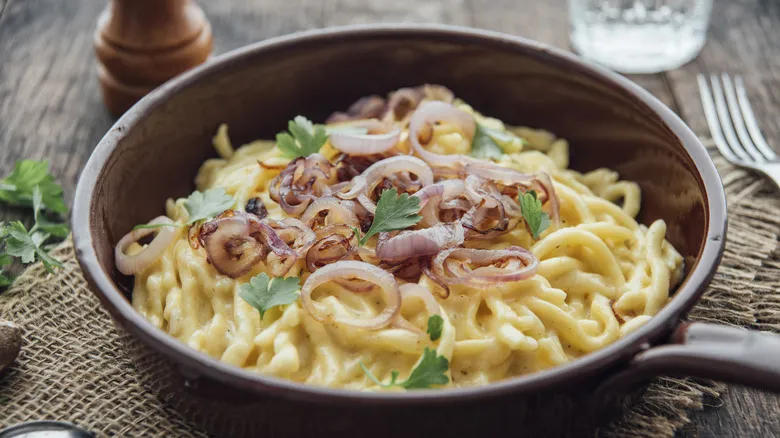Käsespätzle is spätzle topped with cheese

Käse, which means "cheese" in German, highlights the dish's blend of egg noodles and dairy. Like other spätzle varieties, the egg noodles are made from scratch using flour, eggs, milk, butter, and salt. After boiling, the real magic happens with the cheese topping.
Typically, Emmentaler cheese is used in this dish. This semi-firm Swiss cheese offers a delightful mix of nutty, fruity, and mild flavors, along with excellent melting qualities, making it a favorite for käsespätzle. Alternatively, some chefs opt for a bolder Gruyère to enhance the flavor. For a creamier version, cottage cheese or quark can be used as a topping. What remains consistent is that the cheese is sourced from high-quality dairy, which is a point of pride for chefs.
Another key element of käsespätzle is the generous amount of fried onions. To add richness, chefs almost always incorporate butter. Beyond that, additional ingredients vary by recipe. In addition to salt and pepper, some may season the dish with nutmeg, while others might include a garnish of chopped chives. Although it is often served in a bowl, you’ll frequently find käsespätzle baked in a large casserole dish, perfect for sharing.
Spätzle comes in many additional forms

Käsespätzle is a delectable variation of spätzle, but it’s far from the only option. Like many other doughy dishes, it serves as an excellent base for rich sauces and vibrant toppings. You can experiment with toppings ranging from a lesser-known beef braise to a serving of sauerkraut. Given spätzle's versatility, you can draw inspiration from various cuisines.
German versions of spätzle differ widely. In the most popular preparation, the dough dumplings are sautéed and mixed with breadcrumbs, onions, herbs, bacon, mushrooms, and more. The noodles aren’t limited to a flour-based mixture; they can also be crafted from cauliflower, whole grains, and whole wheat. Chefs also play with shapes; some noodles are long like spaghetti and pair well with meats, while shorter varieties are served as a standalone dish resembling porridge.
In Hungary, spätzle is often used to absorb fragrant, paprika-infused sauces. It complements the beloved chicken paprikash and is served alongside a hearty bowl of goulash. The dish is also popular in the northern Italian region of Sudtirol, where the dough may be enhanced with spinach or liver to intensify the flavor. When topped with a nutmeg-infused butter sauce, it becomes a delightful example of hearty mountain cuisine.
Recommended

What's The Difference Between T-Bone And Porterhouse Steaks?

What Are Those Old Fashioned Strawberry Candies And Where Did They Come From?

San Francisco-Style Hot Dogs Are Giving Chicago A Run For Their Money

Here's What You'd Find In A Traditional Japanese Breakfast
Next up

